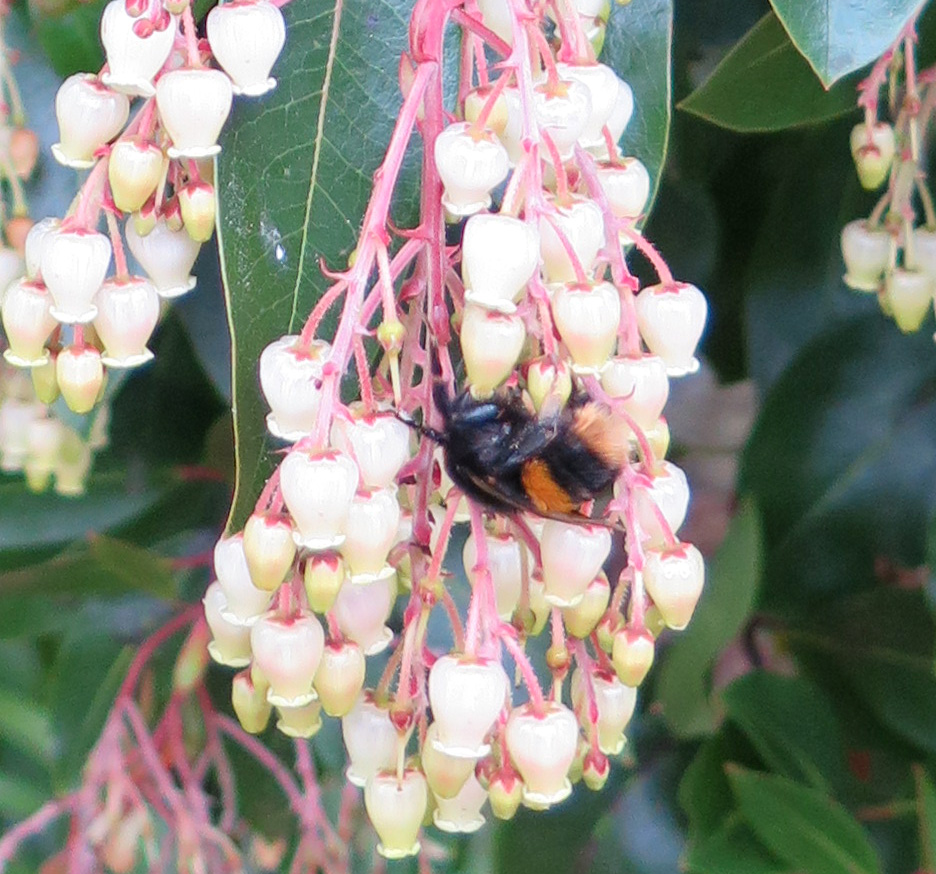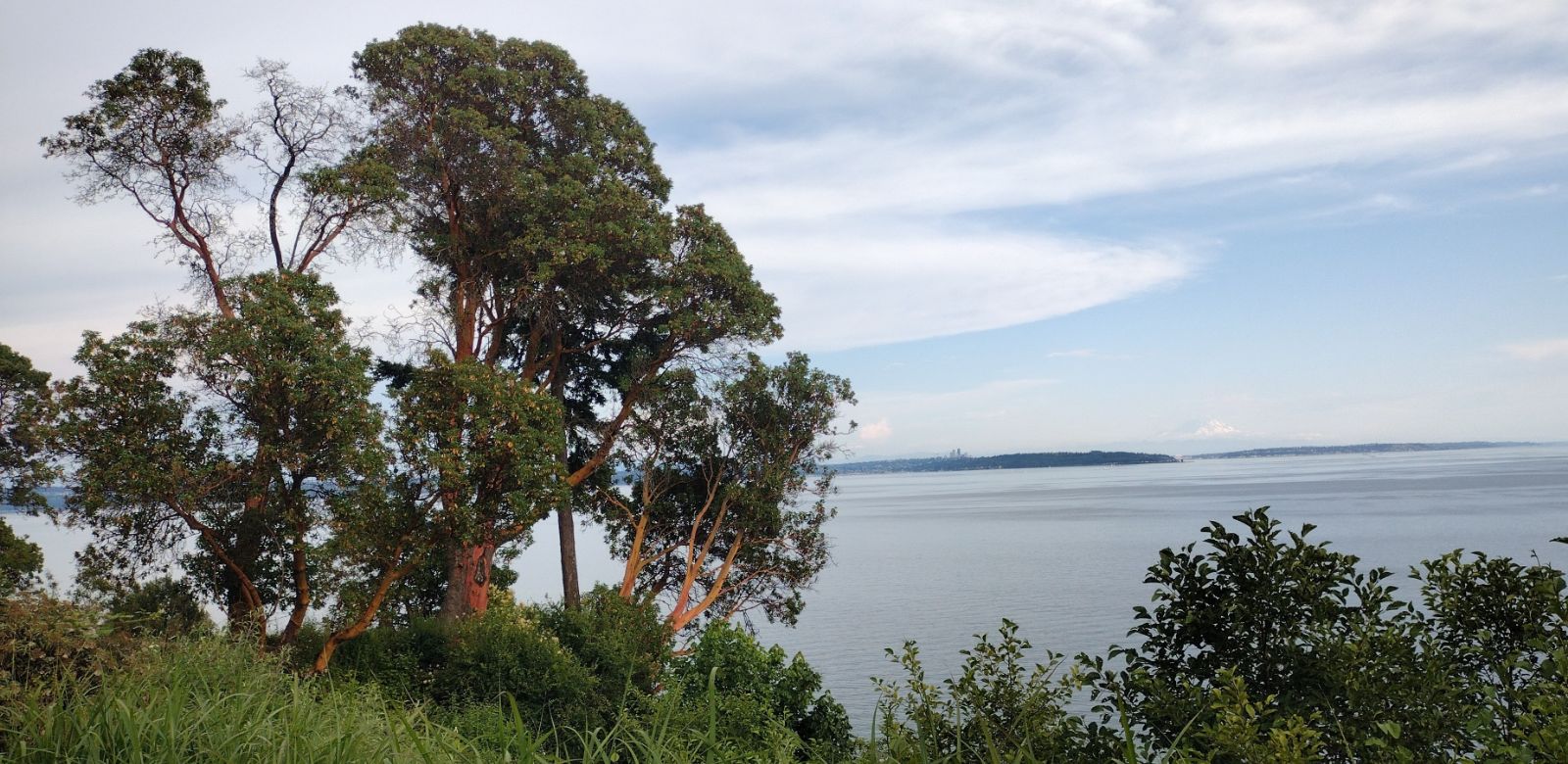Arbutus
Sponsor
Kindly sponsored by
a member of the International Dendrology Society
Credits
Julian Sutton (2021)
Recommended citation
Sutton, J. (2021), 'Arbutus' from the website Trees and Shrubs Online (treesandshrubsonline.
Family
- Ericaceae
Common Names
- Strawberry Trees
- Madrones
- Arbousier
About 12 species of evergreen shrubs and small (rarely medium) trees, often multistemmed with twisted trunks and rounded but irregular crowns. Many species have red-brown exfoliating bark. Leaves simple, alternate, margins entire or toothed, leathery, with a well-developed petiole. Flowers in terminal racemes, hermaphrodite, with white or pink, 5-lobed, urceolate corolla and persistent 5-lobed calyx; stamens 10; ovary superior, with 5 locules, each conatining more than one ovule, and a single style. Fruit a fleshy berry, orange or red when ripe; surface more or less warty, rarely merely grooved; seeds partially embedded at maturity in a fleshy placenta. (Grimshaw & Bayton 2009, Sørensen 1995, Huxley et al. 1992).
Characterful, densely leafy evergreens with showy, often scented flower clusters, conspicuous and more-or-less edible fruits, as well as attractive – sometimes stunning – bark, the Strawberry Trees are a well appreciated if under-planted group. Their garden use has been limited by concerns around hardiness, real though sometimes overstated, and genuine but surmountable difficulties with transplanting and establishing certain species.
Arbutus has a strongly disjunct distribution. It has two centres of diversity, one in western North America (about 8 species, mostly in Mexico’s Sierra Madre Occidental), and a second in the Mediterranean Basin (about 4 species), both seasonally dry areas. This is known as a Madrean-Tethyan distribution (Wen & Ickert-Bond 2009), also seen in Cercis for example. Axelrod (1975) suggested that such distributions are relicts of a belt of evergreen, sclerophyllous vegetation stretching almost continuously across parts of North America and Eurasia by the mid-Eocene, when the North Atlantic was much narrower than it is now. Using molecular data, Hileman et al. (2001) dated the divergence of these two groups of Arbutus spp. at 21–39 MYA, consistent with this explanation, although in some other plant groups more recent divergence implies longer-distance dispersal (Wen & Ickert-Bond 2009).
Arbutus belongs to subfamily Arbutoideae, a well defined and apparently natural group in the Ericaceae (Hileman et al. 2001), along with Arctostaphylos (the Manzanitas and Bearberries, a large genus strongly centred on western North America) and four much smaller genera, Comarostaphylis (the Summer Hollies), Ornithostaphylos, Xylococcus (these three from western North America) plus Arctous (circumarctic). As currently understood, Arbutus is distinguished by its fruits being berries whose surface is more or less warty, with multiple seeds per locule. In the remaining genera, the fruit is a drupe. Comarostaphylis spp. are the most likely to be mistaken for an Arbutus, having a warty fruit surface and sometimes peeling bark; but cut into a fruit to find hard central nutlets in Comarostaphylis, or more dispersed seeds with a less stony endocarp in Arbutus. Smooth-skinned drupes characterize Arctostaphylos, Ornithostaphylos, Xylococcus and the deciduous Arctous.
The genus was first named by Linnaeus in Species Plantarum, 1753, borrowing an Ancient Roman name for Arbutus unedo. However, Linnaeus’ concept was broad, including Arbutus uva-ursi L. published at the same time for what we now know as Arctostaphylos uva-ursi (L.) Spreng.. Arctostaphylos was recognized on the basis of its different fruit by Adanson (1763), but the distinction was not universally accepted until well into the 19th century. Using nuclear DNA sequences from a large number of species across the subfamily, Hileman et al. (2001) argued convincingly that Arbutus is paraphyletic: the Old World and New World species respectively group as the two lowest branches of the tree, while the other five genera are monophyletic. It seems that the distinctive Arbutus fruit was either a characteristic of the subfamily’s common ancestor, then lost in the ancestor of the remaining genera, or has evolved twice. This result appears to have been widely accepted, but the taxonomic consequences have not yet been worked through. It is entirely possible that at some stage a taxonomist will advocate either splitting Arbutus into two natural genera, or lumping the entire subfamily as one genus. In the first case, the name Arbutus would go with the Old World species, a new name being required for the Americans; in the second case, Arbutus would have priority as the name for the widely-drawn genus. We offer no opinion here as to whether either treatment would be advisable, but it seems rash to ignore the possibilities.
There is a strong resemblance between the species. Differences in leaf shape, toothing and hairiness are useful diagnostic features, and the bark is unusually important in identification. Of the Old World species, A. unedo is distributed around the Mediterranean, but also extends up the Atlantic coast to Ireland; A. andrachnoides is centred on the eastern Mediterranean, while A. canariensis is restricted to the Canary Islands. A. pavarii Pamp. is sometimes considered distinct from A. unedo: a shrub endemic to the Jebel Akhdar, N. Libya, it is not in cultivation and not covered here. Seven species are currently recognised in Mexico; only the name A. xalapensis is at all familiar to gardeners, and species delineations have changed over the years, so we devote a page to an overview of Mexican species. Of these A. arizonica and A. xalapensis (both of which extend across the US border) plus the shrubby A. occidentalis are certainly grown in our area: we give these full treatments. Finally A. menziesii is restricted to the Pacific seaboard of the USA and Canada.
Hybridization is rife in this genus; all species are outbreeding, bee-pollinated diploids (2n=26), and hybrids can be fertile. Sporadic natural hybrids between A. bicolor and all but two of the other Mexican species have been recorded, for example (González, González & Sørensen 2012). Natural and garden hybrids between the Old World species are far more important in cultivation; among them A. × reyorum is arguably now the finest Strawberry Tree for general use. As yet there are no reliable reports of hybrids between the two geographical groups.
Arbutus are essentially sun-loving plants. Even when in forests, they tend to be in open situations, and at lower latitudes where the sun is high in the sky. As a rule they are drought tolerant, often growing in rocky places. In cultivation, sun and good drainage should be the rule. Summer irrigation is best avoided (Hogan 2008); waterlogging is more likely to harm an established plant than is drought. This is a rare example of an ericaceous genus which in general suits both acidic and alkaline soils, although information is lacking for some of the more obscure Mexican species.
The mycorrhizas of Arbutus are well-studied, and are much more like the ectomycorrhizas of most forest trees than the ericoid mycorrhizas of nearly all Ericaceae (Smith & Read 2008, Moore 2020). Like ectomycorrhizas, the fungi involved are basidiomycetes – usually the same speces; hyphae form a similar sheath around the short roots; and hyphae ramify between the cells in the outer layers of the root, much like the Hartig net of ectomycorrhizas. However, what if anything this means for cultivation of Arbutus is unknown.
Similarities between the species mean that their economic uses tend to be similar. The hard wood is more ornamental than durable, and tends only to be used for small items, but diverse cultures have discovered that it makes excellent charcoal. The bee-pollinated flowers produce nectar, and are valued for honey production in some areas. In the wild, it seems that birds are overall the most important dispersers of seed; the fleshy fruits, of varying palatibility, and which often ferment spontaneously, have been used as food and for making alcoholic drinks in many places.
Fresh seed germinates reasonably freely; several species require a cold (or at least cooler) period. Seedlings transplant and establish rather poorly, especially in the case of the American species. It is generally suggested that seedlings should be planted out as young as possible, with minimal root damage (Grimshaw & Bayton 2009). Airpots might prove suitable. Vegeatative proagation – essential for cultivars – can be by simple layering or by hardwood cuttings in winter, with bottom heat (Huxley et al. 1992). There are now many reports of successful micropropagation of both New and Old World species.
The key covers all the species and hybrids to which we give full treatments (much modified from Demoly 2004)
Identification key | ||
| 1a | Bark reddish grey, retained; flowering in autumn; inflorescence pendent. | A. unedo |
| 1b | Bark red or red-brown, flaking or peeling in strips or sheets at least on small branches. Flowering season and inflorescence various. | 2 |
| 2a | Bark brown to red, peeling in small flakes but not in long strips, even on small branches; flowering time various. | 3 |
| 2b | Bark red or red-brown (sometimes white or green when newly exposed), peeling in strips or sheets at least on small branches; spring flowering. | 5 |
| 3a | Leaves all <3× as long as broad; young shoots sparsely glandular-hairy. | A. × andrachnoides |
| 3b | Some leaves >3× as long as broad; young shoots densely glandular-hairy. | 4 |
| 4a | Bark on trunk weakly flaking, flakes small and often remaining attached basally; inflorescence axis angled with a downward 'elbow'. | A. × androsterilis |
| 4b | Bark on trunk peeling freely in flakes; inflorescence bowed rather than angled. | A. × reyorum |
| 5a | Inflorescence with at least some glandular hairs. | 6 |
| 5b | Inflorescence with only eglandular hairs, or glabrous. | 10 |
| 6a | Leaves mostly <2×, and none >3× as long as broad. | A. andrachne |
| 6b | Leaves >2×, and the longest >3× as long as broad. | 7 |
| 7a | Always a shrub <2 m tall (very rarely cultivated). | A. occidentalis |
| 7b | Potentially a tree or larger shrub. | 8 |
| 8a | Newly emerged shoots with densely hairy stem. | A. xalapensis |
| 8b | Newly emerged shoots with glabrous stem. | 9 |
| 9a | Leaves mostly 2.5–3x as long as broad. | A. × thuretiana |
| 9b | Almost all leaves 3–4 × as long as broad. | A. canariensis |
| 10a | Leaves elliptic, 3.5–8 cm wide; bark of branches and trunks peeling, white or green when newly exposed, ageing red-brown (some old, thick trunks may not peel). | A. menziesii |
| 10b | Leaves lanceolate, 1–4 mm wide; bark red and peeling only on small branches, grey and chequered on trunk and older branches. | A. arizonica |





